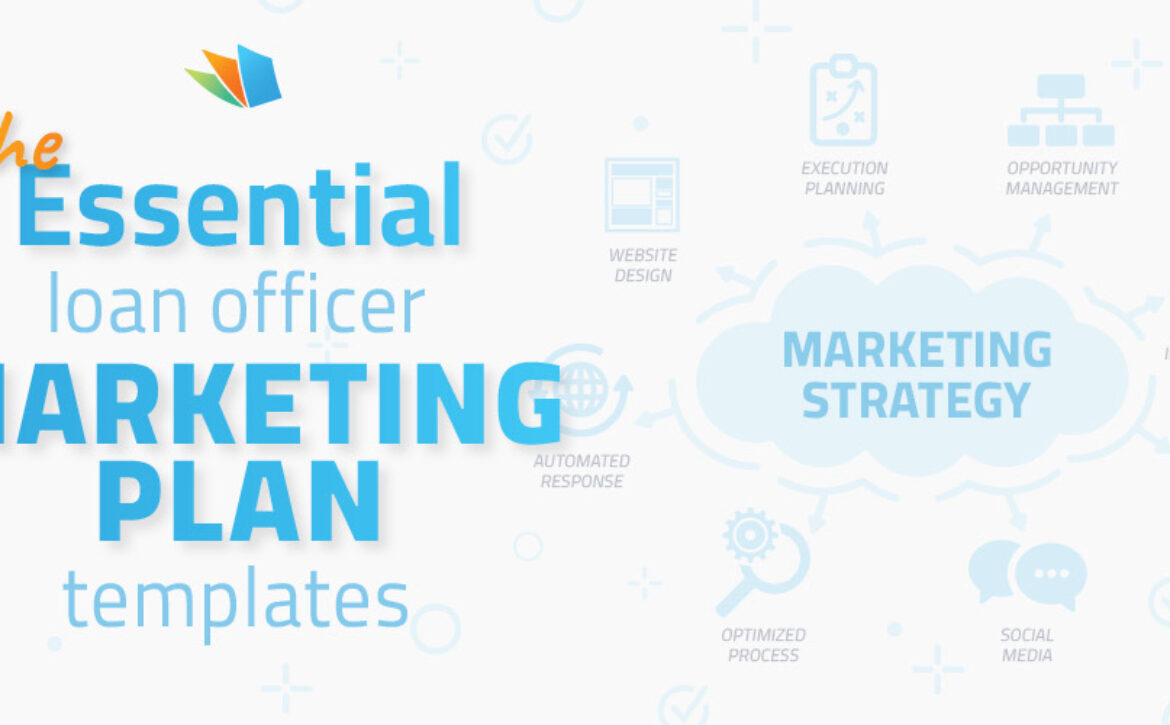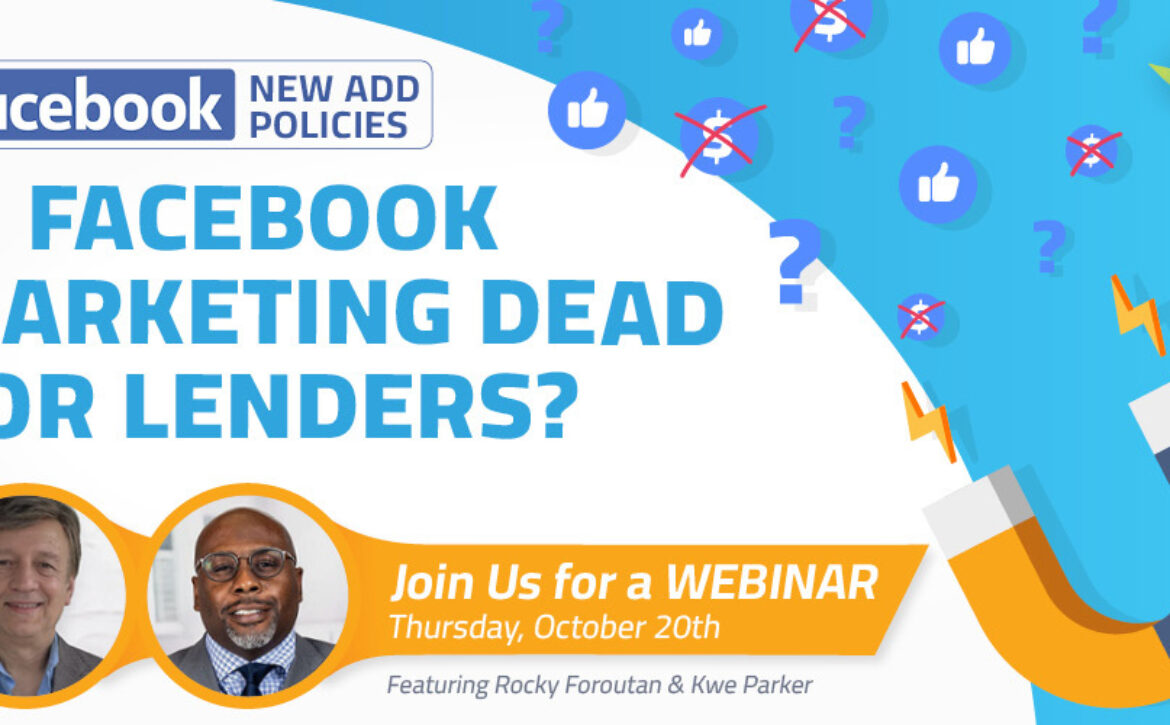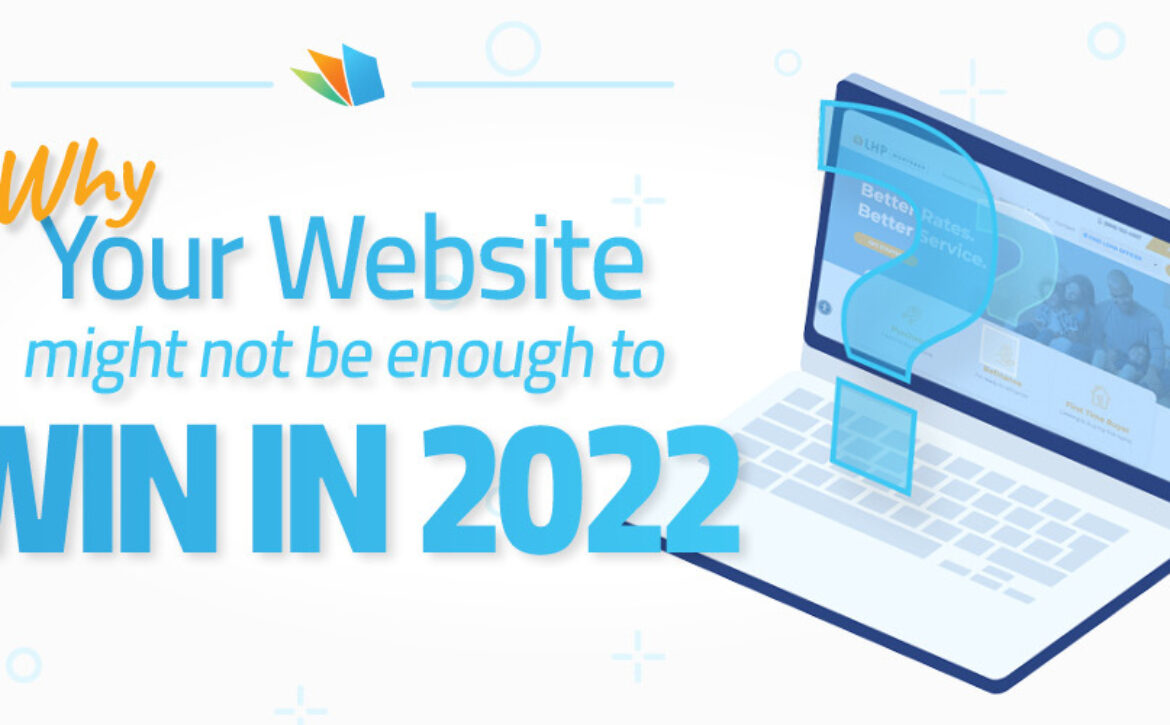Digital presence is vital to your success. Consumers turn to the internet when they want to learn more about a loan officer or a particular loan product, making it crucial for LOs to have a robust digital presence. How easily your business is found online, how effective you are at conveying trust, authority, and value, and how well you connect and engage with current and potential borrowers will all determine your business longevity from this point forward.
Digital presence includes all online platforms and content you have control over – such as your website, social media profiles, email campaigns, etc. It also involves those you may have no control over, such as online reviews, testimonials, and general feedback. The same goes for both web and mobile presence.
However, building your mortgage business’s digital presence can seem daunting. With so many platforms, terms, and varying trends, staying on top of it can be challenging –especially if you don’t know how to do it or tell if your actions are successful.
Even online-savvy LOs can mistakingly think they have this “digital presence thing down” when, in reality, they’ve simply blurred the line between personal social media use and digital reputation management (hint: they are not the same).
We’ll go over everything from how to improve your website traffic to social media content with the highest engagement to increasing your presence in the inbox! But first, let’s review why digital presence is so paramount to your success strategy.
Benefits of a Digital Presence
Get discovered
97% of consumers search online for local services. A strong digital presence makes it easy for a consumer who isn’t familiar with you to discover you.
Market your business 24/7
With a strong online presence, consumers can discover, learn about, engage with, and reach out to you whenever they want, no matter where they are in the borrower journey and through whatever device they prefer.
Get more conversions.
Being prominent on multiple channels creates numerous opportunities for engagements and conversions to happen more quickly.
Build Your Personal Brand
Your brand is what sells you to borrowers. Even if you’re part of a larger corporate mortgage company, you need a healthy digital presence to bridge the gap between your services and your target prospects.
Save money
Social media platforms and website analytics provide data that show what’s working and what’s not so that you can allocate your strategy accordingly.
A Digital Presence Builds Relationships
Digital presence is the necessary catalyst for building relationships that elevate your popularity and increase leads. It helps you become more relatable and provides a human touch –an irresistible notion that leads to increased customer loyalty too.
Increase the trust factor
Consumers rely on multiple sources of information before deciding. If they don’t find enough information about your business online, you’ll be dismissed by both consumers and search engines.
Perfect your borrower’s journey
With a solid online presence, you can be available to your prospect at different points in their journey toward home loan applicants, including through multiple devices.
Download Ebook
How to Increase Digital Presence With Your Website
No matter how someone finds out about your business—whether through a search, social media, a paid ad, a testimonial, or a listing—a consumer’s first inclination is to go to your website. Calling or even visiting a physical branch is far less appealing than browsing your site on their own terms and quickly gathering the information they want. Here are the initial steps to take:
Get a modern, interactive mortgage website.
Consumers have insurmountable high expectations these days when it comes to websites—to the point where if you don’t have a good website, you’re almost better off not having one at all. According to Stanford’s Credibility Standard, 75% of consumers admit judging a company’s credibility based on their website design alone!
- While many things in life are DIY, a mortgage website should not be one of them. DIY website builders are awesome in theory, but when it comes to the intricacies of mortgage sites, you’ll likely spend hours tweaking and fixing glitches between your site and incompatible (but necessary) third-party applications.
- One route would be to have a custom build site; however, a template website specific to the mortgage industry is often the best choice. Having a lead-generating, customizable website that looks and functions exactly the way you want it to without losing hours of your time is worth the small investment.
Perform An SEO audit and stay current with best practices.
Did you know that only 49% of small businesses invest in SEO? That stat is pretty shocking, considering that SEO is one of the primary factors that get you on the first page of Google—the hallmark of a digital presence. It takes time, but when it’s done right, it’s the gift that keeps on giving.
Here’s how to use SEO to increase digital presence:
- Follow Google’s best practices like creating keyword-targeted content, optimizing images, and building links.
- Improve your core web vitals by optimizing and compressing large files and other elements.
- Correct mobile errors quickly. All sites are now indexed by mobile-first indexing.
- Use schema markup so that rich snippets can appear below your site title in the SERP.
- Prioritize local SEO. Most searches are now conducted via mobile and are location-based.
Target more keywords with a business blog.
Your website’s core pages (homepage, about, services, contact) are relatively limited in optimizing for keywords –other than your service and location. Since the goal of SEO is to distill the information that consumers are looking for, it’s critical to have a blog from which to do it.
With a blog, each post dives deep into a relevant topic using keywords. This lets you appear in search results for countless searches that consumers perform at various stages in their borrower journey.
A more substantial web presence often also equates to more traffic to your conversion-optimized site.
A blog is also where you demonstrate your authority and let your brand personality shine through, which plays into the reputation component of your digital presence.
When blogging for digital presence, remember to:
- Conduct keyword research.
- Target one main keyword (or keyword theme) and include it in your title, headings, image file names, alt text, and meta description.
- Never attempt to keyword stuff your content.
- Make use of H1, H2, and H3 headings.
- Use numbered and bulleted lists to make it easier to read and be “Featured Snippet” friendly.
- Share your posts using social media and email.
How to increase digital presence with social media
Using social media to increase your digital presence is a no-brainer. Their design and vast user base make social media platforms the ideal tool for amplifying your digital presence.
According to Sprout Social, after following a brand on social media, 91% of consumers will visit the business’s website, 89% will convert, and 85% will recommend the brand to others.
Here’s how to utilize social media to improve your digital presence.
Limit the number of platforms.
Digital presence is about quality, not just quantity. Choose the platforms your prospects are using, and be active daily.
Top platforms to utilize:
- Facebook
- LinkedIn
- Twitter
- YouTube
Platforms to possibly consider:
Think community, not followers.
Your digital presence doesn’t improve by simply increasing followers. It improves with a better overall presence. Focus on cultivating quality content that engages a niche audience that can benefit from your mortgage services.
Use social media to support SEO.
Social media platforms can work like search engines. For example, Facebook receives over 2 billion searches per day! And in 2020, Meta announced that Instagram now supports general keyword inquiries (as opposed to just accounts and hashtags). So just like with your website, include popular keywords in your profiles and posts.
By the way, you should also still use hashtags in your posts, but use them as you would keywords. Broad hashtags should be used sparingly and more focus on location-based and niche terms to increase your visibility to the right audience.
Be active!
There’s no way around this: If you’re going to make social media a part of your digital presence, you need to be active. This means publishing quality posts regularly, responding to comments, engaging with your community, answering direct messages, and occasionally sharing content from other sources.
How to Improve Digital Presence with Listings Management
Listings can help you show up in relevant online directories. It can also serve as business citations, a factor that Google considers when ranking your site. Here’s how to properly use online listings to boost your digital presence.
Start with the giants.
Most smaller directories aggregate information from larger ones, so make sure that you curate your listing to perfection on these:
Google My Business (GMB)
Your GMB profile is like a second home for your business. It provides all of the essential info about your business and ties it directly to local searches and maps. Plus, reviews are also a factor considered for SEO purposes.
Yelp
Yelp receives 178 million visits monthly. Reviews on this platform will appear on Apple Maps and also influence the Yelp curated lists found in search engine results. Lastly, Siri and Alexa use Yelp to provide answers for local searches.
Facebook
Get listed on Facebook Places by checking in at your business when you’re at the location. Also, remember that Facebook Reviews is a popular place for consumers to leave feedback and learn about your business.
Bing
Google is the top search engine, but that doesn’t mean Bing is dead. Check out these recent stats:
- 30% of all searches in the US come from Bing.
- Bing is on 1.5 billion+ devices.
- Over 70% of Bing users are 35+.
Loan officers, in particular, can benefit from Bing because there is less competition, and the older audience is the ideal demographic for home financing products.
Foursquare
While Foursquare is pretty much non-existent as a social platform, its “Places” tech isn’t. Foursquare powers location data for Uber, Apple, Twitter, Samsung, Microsoft, and 120,000 other developers.
So when listed on Foursquare, your business is automatically included in thousands of local apps and services.
Be meticulous about your listing information.
Because algorithms determine listing results on social media feeds and SERPs, the quality of your listing matters, so make sure that you populate every section accurately and completely, such as:
- Business name
- Contact information
- Website
- Category
- Hours
- Description
- Photos
Keep the information identical across listing sites as much as possible, such as [St.] vs. [street], [Business name] vs. [Business Name, LLC], and other details. Remember that Google looks at information consistency for determining credibility and ranking.
Have a proactive review strategy.
Reviews have a powerful influence over your ranking in directory search results. They’re also one of the top-ranking factors for Google’s local search. Have a strategy for responding quickly to reviews –particularly how to respond to negative ones.
Actively manage your listings.
With the thousands of directories pulling information from one another and making updates from user suggestions, you must have a system for correcting listing inaccuracies. Take the time to keep them consistent, or use a listing service provider who can stay on top of everything for you.
More Ways to Increase Digital Presence
Paid advertising.
Paid ads are a way to show prominently on search engines, social media feeds, and websites your prospects visit. While SEO targets prospects with keywords, with PPC, you can target based on several criteria. Here are some advertising options you can use to increase your digital presence:
- Search ads (Google or Bing)
- Social ads, particularly Facebook
- Retargeting ads
Email marketing.
Email marketing has an advantage over other digital channels since recipients opt-in to receive your emails. Plus, there’s less competition pulling their attention. Here are best practices to follow:
- Write irresistible subject lines to make it stand out and improve your open rate.
- Build your list by creating content that people need to sign up to receive, such as a home buying guide or industry report.
- Segment your list. Segmenting your email list makes it possible to customize the message based on the loan product and where the subscriber is in the borrower’s journey.
Build relationships with partners.
Building your digital presence takes work, but you don’t have to go at it alone. Partnering with others with whom you have a relationship can help you get it done faster. Consider:
- Real estate agents to expand your reach to a relevant audience.
- Loyal customers to write great reviews and share your content across social media.
- Local business owners to spread positive word of mouth about your business and promote you on their networks.
Guiding Principles for Growing Your Digital Presence
Define Your Goals
It’s critical to define your primary goals with digital presence and how you’ll measure whether you’ve attained them. Are you looking to increase your brand’s awareness? Drive traffic to your website? Generate leads? Once you’ve identified the goals, you can develop a strategy for achieving them.
It’s possible to have multiple goals and actively work towards all of them. However, defining them will help you understand the method and mode of measurement.
Evaluate and Adjust Your Strategy
As with any marketing strategy, you must regularly evaluate your digital presence and adjust. Use analytics tools to track progress, identify areas for improvement, and adapt methods accordingly.
Remember to also keep up with changing trends. New platforms and technologies are constantly emerging, so staying up-to-date is crucial.
Create compelling content.
The goal is to create compelling and relevant content to encourage engagement and action in your audience. That means writing headlines that grab attention, high-value articles, high-quality social media copy, and branded images and videos. Include calls-to-action (CTAs) to encourage readers to take the next step, whether signing up to receive a free download or pre-qualifying.
Utilize outsourcing digital presence management.
One way to ensure you’re keeping up with your digital presence is to outsource certain tasks to the professionals. Consider social media posting, drip email marketing campaigns, SEO, and paid ads. While a professional will do the heavy lifting for you, it’s essential that you stay involved in the process.
Deliver excellent borrower experience.
One of the most vital things that ensures a successful digital presence is to deliver a phenomenal borrower experience. This includes every digital tool and platform that your borrower uses to interact with your business –from point-of-sale to mobile app.
Download Ebook
Striving for a more robust digital presence opens the door to getting found more easily by your ideal borrower, connecting with prospects, and increasing conversion rates –which is the foundation for boosting leads and business growth. So make sure you prioritize improving and managing your digital presence, and if you need assistance dominating your competition, LenderHomePage has the tools and team to make that happen.















